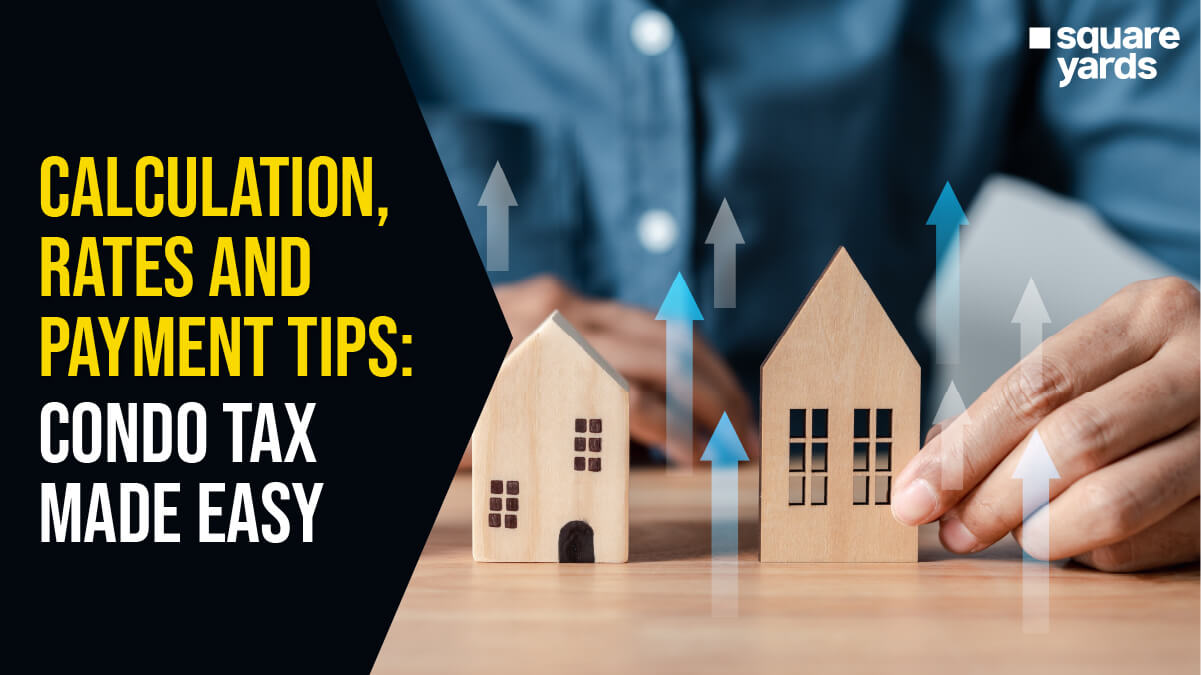If you’re a landlord in Ontario, then you should know about the tenant eviction process. It is essential for managing your property effectively and staying within the bounds of the law. Evicting a tenant can be challenging due to the detailed rules and regulations outlined in Ontario’s Residential Tenancies Act (RTA). In any case, the landlord has to follow the legal process for tenant eviction. In this blog, we will walk you through each stage of the tenant eviction in Ontario, which is from issuing an eviction notice to preparing for Landlord and Tenant Board hearings. And, if necessary, involving the sheriff to enforce the order. By grasping these steps, you’ll be better prepared to handle tenant evictions smoothly, legally, and with confidence.
Know About Tenant Eviction in Ontario

Understanding tenant eviction in Ontario means knowing the legal process for removing a tenant from a rental unit for specific reasons, such as not paying rent, damaging the property, or engaging in illegal activities. Landlords must follow the rules set by the Residential Tenancies Act (RTA), which ensures the rights of both landlords and tenants are protected. Evictions cannot take place by landlords themselves. They need to issue proper legal notices and, if necessary, go through a hearing with the Landlord and Tenant Board (LTB). If the LTB rules in favour of the landlord, an eviction order is given, and only a sheriff can enforce it if the tenant does not leave voluntarily.
This process helps ensure that evictions are fair and lawful, preventing illegal practices like changing locks or removing a tenant’s belongings without proper notice. Following these legal steps helps avoid complications and ensures everything is done according to Ontario’s rental laws.
Valid Reasons for Evicting a Tenant in Ontario
Landlords can only evict tenants for specific reasons that align with Ontario’s Residential Tenancies Act (RTA). These reasons are mentioned below to help you understand the valid way for an eviction process:
Legal Basis for Eviction in Ontario
Rules from RTA ensure that the tenant eviction process is fair and protects both landlords and tenants. Here are the key valid grounds for eviction:
-
- Non-payment of Rent: One of the most common reasons for eviction is a tenant’s failure to pay rent on time.
- Property Damage: When a tenant causes significant damage to the rental property that goes beyond normal wear and tear, eviction can be justified.
- Illegal Activities: Engaging in illegal activities, such as drug dealing or other criminal actions on the rental property, can be grounds for immediate eviction.
- Owner or Family Use: If the landlord or an immediate family member needs to move into the rental unit, this can also be a reason for eviction.
Unlawful Eviction Methods
Illegal tenant eviction practices refer to any actions by a landlord that bypass the legal process. In Ontario, landlords cannot force tenants out by changing the locks, removing their belongings, or shutting off utilities. These actions are prohibited and can lead to serious legal repercussions for the landlord. Only a sheriff can enforce an eviction order once it has been approved by the Landlord and Tenant Board (LTB). Attempting to personally evict a tenant or using intimidation violates the Residential Tenancies Act (RTA) and compromises the tenant’s rights. Landlords must strictly follow the legal process to avoid complications and penalties.
Detailed Steps for Evicting a Tenant Legally

Evicting a tenant in Ontario requires adherence to a structured legal process to ensure fairness and compliance with the rules. The following steps outline the eviction procedure:
-
- Issue a Tenant Eviction Notice: Start by serving an official eviction notice, such as Form N4, for non-payment of rent. The notice details the reason for eviction and any actions the tenant can take to resolve the issue. The tenant typically has 14 days to respond or address the problem.
- File for a Hearing with the Landlord and Tenant Board (LTB): If the tenant doesn’t respond or comply with the notice, the next step is to file an application with the LTB for a formal hearing.
- Attend the Hearing: Present your case at the LTB hearing, bringing any necessary evidence, such as rent payment records or photos of property damage. Be prepared for the tenant to present any defences or counterclaims.
- Obtain the Eviction Order: If the LTB rules in your favour, you will receive an eviction order that states the tenant must leave the property, usually within 7-14 days.
- Enforce the Eviction Order with the Sheriff: If the tenant does not vacate by the date specified in the order, you must contact the sheriff’s office to enforce the eviction. Only the sheriff can legally remove the tenant from the property.
Duration for the Eviction Process to Take Place
The duration of the eviction process depends on several factors, including the reason for eviction, tenant cooperation, and the efficiency of the LTB. Here are the timelines and procedures involved in the eviction process:
-
- Notice Periods: It is important to provide tenants with a 14-day notice period from the landlords. This period can range from 10 to 120 days, depending on the cause.
- Application to the LTB: If the tenant has a problem or doesn’t comply with the notice, the landlord can apply for the LTB (Landlord and Tenant Board). The hearing from the board can take several weeks to a few months.
- Hearing and Decision: Both parties present their cases to the board during the hearing. The LTB typically issues a decision within a few days to weeks after the hearing.
- Enforcement of Eviction: If the LTB orders an eviction and the tenant doesn’t vacate, the landlord must involve the Sheriff to enforce the order. This step can add additional time, often several weeks, depending on the Sheriff’s availability.
- Estimated Total Duration: The entire process, from issuing the initial notice to the tenant vacating the property, can take approximately 85 to 138 days. If the Sheriff’s involvement is required, it may extend up to 168 days.
Expenses Associated with Tenant Eviction in Ontario
Evicting a tenant in Ontario comes with several costs that landlords should be aware of in order to plan effectively. These expenses include both direct and potential indirect costs that can add up throughout the process:
-
- Application Fees: To start the eviction process, landlords must pay a fee to the Landlord and Tenant Board (LTB). For example, applying to evict a tenant for non-payment of rent costs $201 or $186 if filed online.
- Legal Fees: Hiring a lawyer or paralegal to assist with the eviction can add to the expenses. Paralegals generally charge $150-$300 per hour, while lawyers range from $300-$500 per hour.
- Sheriff’s Fees: If the tenant doesn’t leave voluntarily after an eviction order, landlords must pay the sheriff to enforce the eviction. The cost for this service varies, so it’s advisable to inquire about the fees in advance.
Avoid Tenant Eviction Issues
Preventing tenant eviction issues requires proactive measures that develop positive landlord-tenant relationships and ensure compliance with lease terms. Here are key strategies to consider to prevent the issues:
-
- Thorough Tenant Screening: Conduct proper background checks, including credit history, employment verification, and references, to assess a prospective tenant’s reliability. This step helps minimise the risk of future payment issues or lease violations.
- Clear Lease Agreements: Draft detailed lease agreements that clearly outline all terms and conditions, such as rent payment schedules, maintenance responsibilities, and property use rules.
- Regular Communication: Maintain open lines of communication with tenants to address concerns promptly and build trust. Regular check-ins can help identify and resolve potential issues before they escalate.
- Promptly Address Problems: If issues arise, such as late rent payments or property damage, address them immediately. Early intervention can prevent problems from worsening and demonstrates a commitment to maintaining a positive living environment.
- Routine Inspections: Conduct regular property inspections with appropriate notice to ensure the property is well-maintained and lease terms are being followed. This practice helps identify maintenance needs and reinforces tenant accountability.
- Educate Tenants: Provide tenants with information about their rights and responsibilities under the lease agreement and local laws. Educated tenants are more likely to comply with terms and contribute to a harmonious tenancy.
- Flexible Payment Options: Offer various rent payment methods, such as online payments or direct deposits, to accommodate tenants’ preferences and promote timely payments.
- Tenant Retention Strategies: Implement strategies to retain good tenants, such as timely responses to maintenance requests, property improvements, and fair rent adjustments.
Conclusion
Understanding and following the legal tenant eviction process in Ontario is important for landlords to protect their rights and maintain fair practices. Evictions must adhere to the Residential Tenancies Act to avoid serious legal repercussions. Landlords can ensure compliance by knowing valid reasons for eviction, issuing proper notices and attending Landlord and Tenant Board hearings. It’s equally important to prevent eviction issues through thorough tenant screening, clear lease agreements, and proactive communication. These steps streamline the eviction process and help build positive landlord-tenant relationships, minimising disputes and facilitating a smooth property management experience.
You May Also Read
|
What is Tenant Screening in Canada |
|
|
Guide To Tenant Insurance in Canada |
|
|
Know The Landlord And Tenant Act |
|
|
Explore The Tenants Rental Problems |
Frequently Asked Questions (FAQs)
Queen Street West is often regarded as Toronto's trendiest neighbourhood. This area is known for its vibrant arts scene, eclectic boutiques, and many dining options.
The best area to live in Toronto depends on individual preferences. However, Danforth has been highlighted for its quality of life, affordable housing, excellent education, green spaces, and transit connectivity.
Yonge & St. Clair is considered one of the safest neighbourhoods in Toronto, with a reported crime rate of 7.77 per 1,000 people. This area offers a mix of condos, apartments, and detached houses, along with inviting green spaces like The Beltline Trail.
Regent Park has historically been one of Toronto's lower-income neighbourhoods. However, it's important to note that the area has undergone significant revitalisation efforts in recent years, aiming to improve living conditions and community services.
Rosedale-Moore Park is often cited as one of Toronto's most desirable neighbourhoods. Known for its historic homes, lush green spaces, and proximity to downtown, it offers a blend of tranquillity and urban convenience. What is the trendiest neighbourhood in Toronto?
What is the best area in Toronto to live in?
What is the safest area in Toronto?
What is the poorest neighbourhood in Toronto?
What is the nicest neighbourhood in Toronto?


































